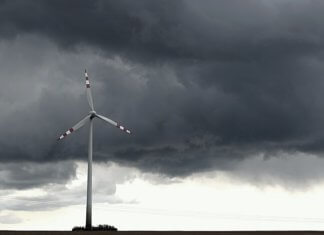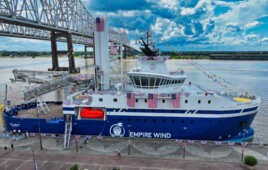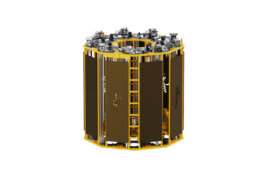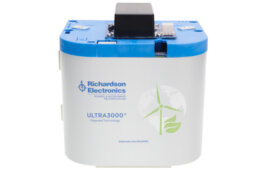DNV GL, the world’s largest independent energy advisory and certification body, has launched a Joint Industry Project with ten commercial partners to develop a COmprehensive methodology for Blade Rain erosion Analysis, or COBRA.

The Joint Industry Project’s group of industry experts will jointly develop Recommended Practices for designing a protection system against rain erosion, with publication expected in 2020.
The COBRA Joint Industry Project has been set up to investigate the damage caused to leading-edge wind-turbine blades from the high-speed impacts of foreign objects, such as raindrops, and identify how best to develop protection systems. Rain erosion damage can be significant on unprotected turbine blades. While the damage caused doesn’t often impact the structural integrity of a blade, it can influence energy generation over the life of a turbine due to degrading the aerodynamic performance of blades.
Therefore, DNV GL has partnered with Vestas, Siemens Gamesa Renewable Energy, LM Wind Power, Ørsted, Senvion, Mankeweicz, Akzonobel, Aerox-CEU, Polytech, Hempel and PPG, to take up the challenge of analyzing the effect that rain erosion damage can have on the blades of operating wind turbines.
“With the trend of building larger machines continuing, greater research is required to provide more protection for wind-turbine blades against rain erosion,” said Steffen Laustsen, Head of Blade Materials, Offshore Technology at Siemens Gamesa Renewable Energy. “The high blade tip velocities associated with large blades makes the impact of rain especially demanding. We look forward to collaborating with the Joint Industry Project partners across all industries to improve the quality and durability of future blade designs.”
The outcome of the Joint Industry Project will be a Recommended Practice for designing a protection system against rain erosion which will be published by July 2020. The cross-industry working group aims to address the following technical topics:
- Identify and define relevant material properties for a protection system
- Develop and methodology to handle and derive design loads from rain data
- Develop a model to conduct raindrop impact analysis
- Develop a design methodology for leading edge protection systems
“Increasing the performance of wind turbines and blades is crucial for the transition to a cleaner energy system,” said Rich Barnes, Executive Vice President Americas at DNV GL. “Erosion of blades is affecting the global wind industry. There is currently a lack of methods and design protection systems to prevent blade erosion, so it is vital to identify solutions and develop tools to tackle erosion problems. The COBRA Joint Industry Project will address these challenges and share knowledge to advance the understanding within the wind energy industry.”
Filed Under: Blades, News



